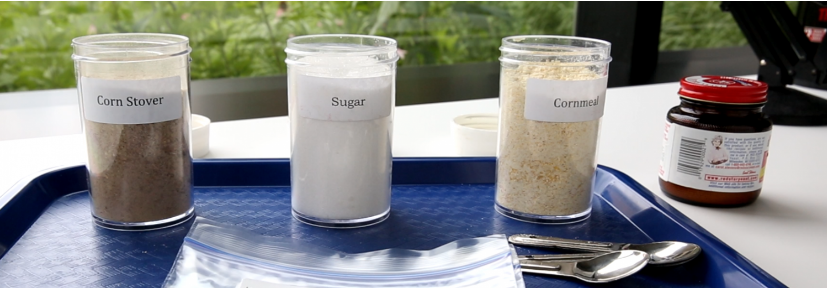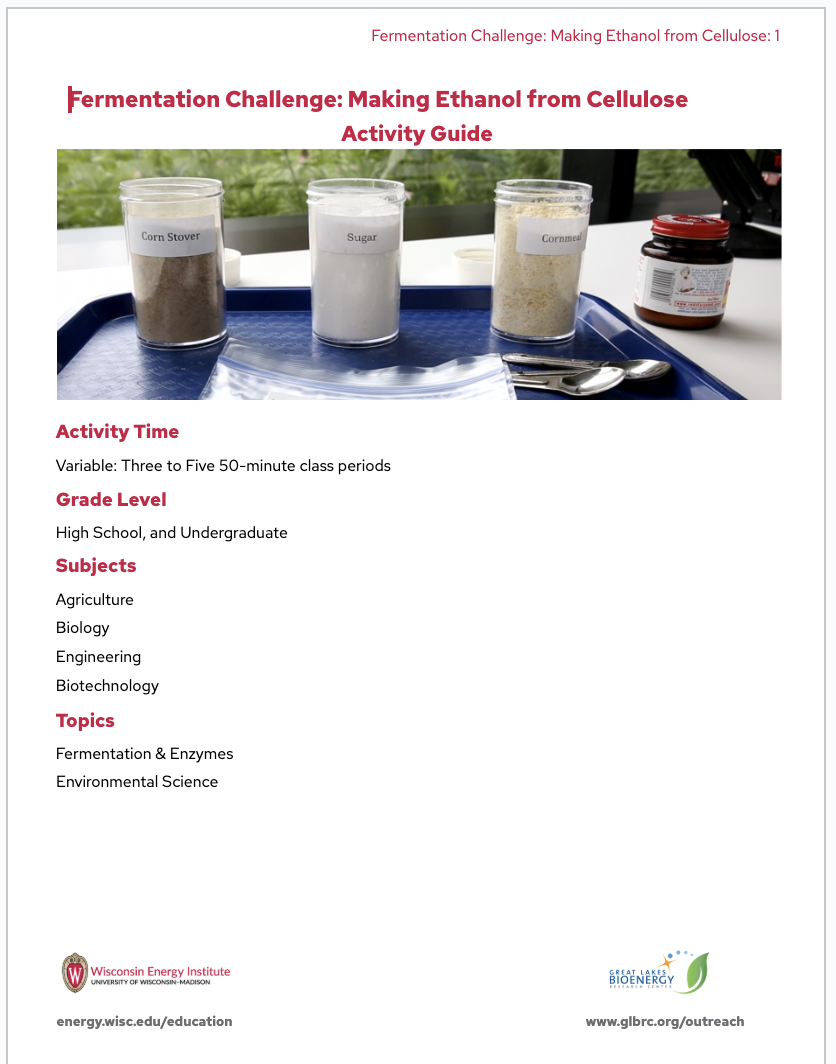
This high school-level lab demonstration and inquiry activity introduces students to the process of fermenting cellulosic biomass into ethanol, along with the challenges researchers face in this area. The demonstration uses a Vernier probe or balloons to measure fermentation rates of different feedstocks to begin the discussion of why some carbohydrates are easily fermented by yeast while others are not. Students can design and carry out their own labs to try to improve fermentation rates of various feedstocks. Students are encouraged to think about potential feedstocks and the biochemical processes necessary to convert each type of carbohydrate into fuel.
Extend the learning by combing this activity with the Modern Scientist-Engineer in the World of Fermentation research story, Boosting Yeast's Appetite for Sugars data dive, Fermentation in a Bag activity, and CB2E: Converting Cellulosic Biomass to Ethanol lab.

Subjects
Agriculture
Biology
Engineering
Environmental Science
Topics
Fermentation & Enzymes
Concepts/Skills
Fermentation, respiration, enzymes, biomolecules, organic chemistry, chemical reactions, biofuels, forms of energy, data analysis, scientific argumentation
Prior Knowledge
Basic carbohydrate structures, brief introduction to photosynthesis, cellular respiration, fermentation, and enzyme structure and function
Time Required
Variable: Three to Five 50-minute class periods
Required Supplies
Basic version: balloons, pint soda bottles or similar containers, dry yeast packets, warm water, yeast feedstocks (i.e. sugar, cornmeal, corn stover, sawdust, grass clippings, etc), string, ruler. Advanced version: Computer or Graphing Calculator or Vernier Lab Quest, Vernier computer interface, Vernier gas pressure sensor, rubber stopper, tubing, 2mL water dropper or small pipets, Water bath, Thermometer, 15mL conical tubes or test tubes, Test tube/ conical rack, Vegetable oil
